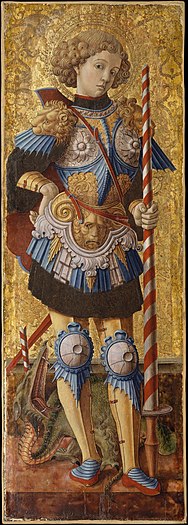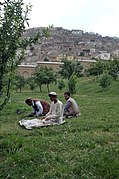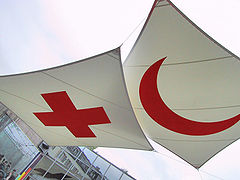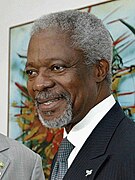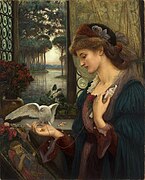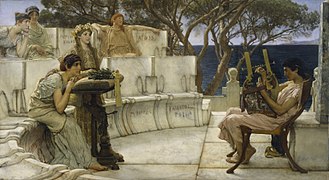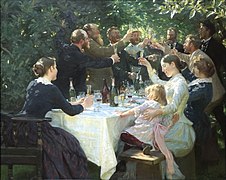Wikipedia:Wikipedia Signpost/Single/2015-02-11
We want to know what you think!
Dear Signpost readers,
Thank you for reading. We would appreciate your input about what you like about the Signpost and how we can improve. Please take this anonymous Qualtrics survey that we link below. We don't ask for your username, email, or real name. We appreciate your honest opinions. The survey may take five to ten minutes to complete.
Our thanks go to the Wikimedia Foundation's Learning and Evaluation Team for letting us use Qualtrics.
- Survey link
- The password is: FebruarySurvey (which is case-sensitive)
Sincerely,
Pine, Signpost Publication and Newsroom Manager
Reader comments
One editor faces likely ban for work on Wikipedia;
Jimmy Wales is awarded $1 million
English Wikipedia editor faces ban for sockpuppetry
- Editor's note: This will receive more extensive coverage in next week's arbitration report; a brief update appears here.
In the ongoing saga of Wifione allegedly using sockpuppets and his tools as an administrator to edit with a major conflict of interest, the English Wikipedia's Arbitration Committee is in the final stages of closing its case on the matter. With his proposals in the workshop receiving little support, he now faces significant sanctions from the committee. Wifione has already resigned his adminship under a cloud, and as of press time, ten arbitrators have voted in favor of a twelve-month site ban, at minimum, in addition to the desysopping. Many arbitrators discussed a so-called "Super Mario Problem"—essentially, conduct that would get a non-administrator banned only gets an administrator desysopped. Although Guerillero initially commented that "even keeping the 'Super Mario Problem' in mind, I do not feel that this reaches the level of a site ban," he later changed his vote on the site ban to support, noting that administrators should be held to a higher standard.
While a site ban appears to be a foregone conclusion at this point, arbitrators continue to discuss the wording of an associated restriction that would ostensibly remain in effect if Wifione returns to the project. The case appears to be nearing closure, and this is one case of alleged long-term abuse that the committee appears ready to put to rest. "Based upon duration, severity, etc.," wrote NativeForeigner while supporting a site ban, the "level of deception and manipulation of [point of view] rises to a very high level over a long period of time."
Wifione first edited in April 2009, racking up over 16,000 edits since. He became an administrator in September 2010, passing with about 80% in support.
Another $1 million prize for Jimmy Wales

Jimmy Wales will be one of the recipients of the 2015 Dan David Prize. First awarded in 2002 and administered by Tel Aviv University, the prize "recognizes and encourages innovative and interdisciplinary research that cuts across traditional boundaries and paradigms. It aims to foster universal values of excellence, creativity, justice, democracy and progress and to promote the scientific, technological and humanistic achievements that advance and improve our world." Each year winners are selected for their work affecting the past, present, and future in a different broad category for each time frame. A US$1 million prize is awarded to the winner or winners in each time frame. This year's categories and winners were:
| Past | Retrieving the Past: Historians and their Sources | Peter Brown, Alessandro Portelli |
| Present | The Information Revolution | Jimmy Wales |
| Future | Bioinformatics | Cyrus Chothia, David Haussler, Michael Waterman |
Last year, Wales shared a separate $1 million prize—the Knowledge Award—with Tim Berners-Lee, but was criticized for accepting money from the United Arab Emirates due to that nation's human rights abuses (see previous Signpost coverage). In a similar vein, an IP editor has asked Wales if he will turn down the award from an Israeli organization, though it remains to be seen if this award will attract as much criticism as the Knowledge Award.
In brief
- GLAM-Wiki Conference: Conference tickets and discounted hotel rooms are now available for the 2015 GLAM-Wiki Conference, which will be hosted by the Dutch Wikimedia chapter in The Hague from April 10 to 12.
- Ombudsman Commission announced: The composition of the 2015 Ombudsman Commission, a group of volunteers tasked by the Wikimedia Foundation's Board of Trustees with scrutinizing potential violations of the global privacy policy, has been announced.
- Slovak Wikipedia: The Slovak Wikipedia has reached the 200,000 article mark. Slovak is spoken by approximately seven million people in Slovakia, the Czech Republic, and Hungary.
Reader comments
Is Wikipedia eating itself?
Is Wikipedia eating itself? Probably not.
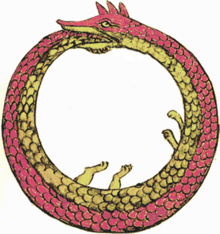
In "The Wikipedia Ouroboros" in Slate, David Auerbach (Auerbachkeller) writes (February 5) that "the Internet finally ate itself". He comments on The Guardian article, since corrected, that made some factually inaccurate claims about the recently closed Gamergate arbitration case (see previous Signpost coverage). (Note: this author was a named party to that case and Auerbach himself had a long-running public spat with another named party, Ryulong.) Auerbach engages in a lengthy discussion of the process of "citogenesis", a neologism invented by Randall Munroe of the webcomic xkcd to refer to the circular reporting of incorrect information inserted into Wikipedia articles. Auerbach claims that "Wikipedia has a policy of 'Verifiability, not truth,' which means that citations, even wrong citations, trump all else." WP:VNT is an essay, not a policy, and Wikipedia policy does not require editors to cite information known to be inaccurate. Auerbach brings up the frequently cited example of Philip Roth and The Human Stain article. He inaccurately writes that Roth "tried to correct an error about one of his books", but Ironholds decisively showed in a 2012 blog post that Roth wanted to remove the observations of critics instead of factual inaccuracies (see previous Signpost coverage). Auerbach writes that "Wikipedia is dragging us all down to its level" through its propagation of "bad facts". While Wikipedia certainly has issues to address with accuracy and verification, he fails to make a case that journalistic errors in reporting and fact checking can be laid at its door.
Edina edit war illustrates disconnect between new and experienced editors

The Star Tribune reports (February 5) on an edit war on the article for Edina, Minnesota when a novice editor repeatedly attempted to insert information regarding Edina's history as a sundown town. A relic of America's racist past, sundown towns were segregated places where African-Americans could not live and were forced to leave before sundown or be faced with harassment, violence, or lynching. Students in an African-American studies class at the University of Illinois taught by Professor James W. Loewen, author of Sundown Towns: A Hidden Dimension of American Racism (2005), were assigned the task of adding to a Wikipedia article the history of such racist discrimination to the article for a particular town. The student who chose Edina added the information about its past as a sundown town numerous times last year, but it was repeatedly removed. While the edit contained citations to a number of primary sources that were clearly inappropriate for Wikipedia, such as an interview and an email message, other sources such as Loewen's book and webpage were removed as well.
The Star Tribune attributed the removals to Juno, and while Juno did remove much of the material in question, he told the Signpost that he "was not the first or only editor to deal with this". The center of the dispute appears to be the work of Professor Loewen, who has a PhD in sociology from Harvard University and is the author of eight books. Juno noted that editors have attempted to enter references to Loewen's work as early as 2009, well before the class discussed by the Star Tribune. Juno disputes the accuracy of Loewen's work in general and his discussion of Edina in particular, telling the Signpost that Loewen was "not a historian" and his work was "the recipient of media criticism for sloppy research" and "can not be considered a Reliable Source". Another editor supported Juno's assessment in 2009, but it is disputed in a current talk page discussion with other editors writing that he is "a well known, respected, and successful writer/scholar" and "a very reliable source on the subject".
The editors attempting to insert the material citing Loewen, including the student interviewed by the Star Tribune, did not participate in any talk page discussion and may not have even known that any discussion existed. Beyond brief edit summaries, it does not appear there was any attempt at further discussion between Juno and the student, such as links to or explanations of relevant policies or dispute resolution procedures. The student told the Star Tribune she gave up her attempts at editing at the end of the course. Juno told the Signpost "I probably should have reached out to one of the ips or pushed for dispute resolution but I honestly thought it was just the same person" who had been inserting the material since 2009.
The publication of the Star Tribune article attracted the interest of other Wikipedia editors and some of the information the student attempted to add has been restored to the article in modified form. A March editathon will be held at the Southdale Library in Edina.
Attkisson: Wikipedia is "astroturf's dream come true"
At a January 23 TEDx event at the University of Nevada, reporter Sharyl Attkisson delivered a talk about astroturf and manipulation of media messages. (TEDx events employ the format of the renowned TED conferences but are otherwise completely independent.) Attkisson called Wikipedia "astroturf's dream come true" and alleged that Wikipedia editing was part of astroturfing and public relations efforts by pharmaceutical companies to create the illusion of a consensus that particular medications are safe and effective. She said:
| “ | Anonymous Wikipedia editors control and co-opt pages on behalf of special interests, they forbid and reverse edits that go against their agenda, they skew and delete information in blatant violation of Wikipedia's own established policies with impunity, always superior to the poor schlubs who actually believe anyone could edit Wikipedia only to discover they’re barred from correcting even the simplest factual inaccuracies. Try adding a footnoted fact or correcting a fact error on one of these monitored Wikipedia pages and poof! sometimes within a matter of seconds you’ll find your edit is reversed. | ” |
While advocacy editing has long been a concern on Wikipedia (see, for example, last week's op-ed in the Signpost), Attkisson did not present specific evidence regarding editing by pharmaceutical companies, and the evidence she presented regarding Wikipedia's reliability was dubious. She recounted an inaccurate version of Philip Roth's 2012 complaint (see above) and claimed that a study showed that "Wikipedia contradicted medical research 90% of the time". This may be a reference to a 2014 study in The Journal of the American Osteopathic Association which actually concluded that nine out of ten Wikipedia articles on the costliest medical conditions had factual errors. This conclusion was disputed by editors from WikiProject Medicine last year in an article called "Is Wikipedia's medical content really 90% wrong?" on the blog of the Cochrane Collaboration.
Attkison has previously alleged that the pharmaceutical industry has edited Wikipedia. In 2014, she wrote in an article on her website "They monitor and edit Wikipedia pages in an effort to downplay research that demonstrates associations between vaccines and autism, and to disparage those who investigate the links." In 2012, an editor purporting to be Attkison complained on the talk page of her Wikipedia article about citations and information in the article from critics who labeled her "anti-vaccine".
Canadian government investigating even more Wikipedia editing

The most recent in a series of Canadian investigations into Wikipedia editing from government IP addresses comes from the Department of National Defence. The Ottawa Citizen reports (February 9) that the DND are investigating edits to the article Suicide of Rehtaeh Parsons which appear to attempt to cast doubt on her alleged sexual assault and subsequent suicide. Parsons' 2013 suicide at the age of 17, which her parents blame on Internet harassment following her alleged gang rape at 15 by four teenage boys, caused a nationwide outcry against cyberbullying. The editing may have legal implications as well, because in Canada, a publication ban is in place to prevent the revelation of any identifying information about Parsons, including her name, due to the fact that the criminal case involved child pornography.
Last summer, Dean Del Mastro, then-MP representing Peterborough in the House of Commons of Canada, demanded an investigation into vandalism of his Wikipedia biography (see previous Signpost coverage). In November, Del Mastro resigned, but the fallout from the investigation continues. The Citizen reports (February 11) that the investigation narrowed down the source of the edits, which labeled Del Mastro a "Dealer of Used Cars with Bent Frames" who "formerly sold crippled mules" and a "perjurer", to a small number of computers, some used by visitors to the Library of Parliament and others by journalists in the Parliamentary Press Gallery. As a result, journalists will now be required to use a login and password to access Parliamentary computers.
Academics on Gamergate: A clash of civilizations?
In the blog of the journal Social Text, Michael Mandiberg (Theredproject) writes of the Gamergate dispute on Wikipedia as "a clash of online civilizations" (February 1). The Wikipedia model of peer production—"utopian vision of simpatico collaboration, controlled through social and technical mechanisms"—clashes with the more Anonymous-like group who "are not interested in Wikipedia per se, other than to try to control the message on that page." He notes that despite the "failure of the system" to address off-Wiki behavior, "peer-production seems to manage to persevere" at the Gamergate controversy article. But, he concludes: "This perseverance comes at an emotional cost, measured in stress and fear: stress felt by the editors who are willing to log the hours reverting the trolls who attempt to insert clauses that cast doubt and skew the content towards the pro-GamerGate position; and fear and anxiety that the anonymous horde might choose them as their target next to dox, intimidate IRL and harass on wiki."
In Overland, Jason Wilson asks "Are misogynists running Wikipedia?" (February 11). He writes that the Gamergate dispute on Wikipedia is important because "Wikipedia possesses considerable cultural authority", citing poll results that 64 percent of Britons trusted Wikipedia entries more than any media outlet and a Pew Research Center survey that the more educated a person, the more likely they are to use Wikipedia. Wilson connects Gamergate to largely right-wing and male fringe groups like men's rights activists, pickup artists, and race realists and notes their early adoption of technological means to spread their messages, such as a white nationalist BBS founded in 1984. Wilson concludes "To go along with the liberal assumption that new technologies lead us only in the direction of collaboration and consensus is not only to deny this history, but the lived experience of those who are pursued by reactionary culture warriors. The left should affirm the persistence and importance of political conflict online, and develop strategies for combatting the right in those places where fact and history are rendered."
In brief
- Ground Control to User:Tom: Numerous news outlets are reporting that beaming the entire contents of Wikipedia into space is one of the ideas that will be considered at a scientific discussion devoted to the search for extraterrestrial intelligence. The session, "Active SETI: Is It Time To Start Transmitting to the Cosmos?", will be held at this year's annual meeting of the American Association for the Advancement of Science (AAAS). Metro suggests nine Wikipedia articles (February 9) that may make alien life less inclined to contact us, such as the Dancing Plague of 1518.
- Kanye interrupted: Music and celebrity news outlets report on the vandalism of Beck's Wikipedia article following the surprise win of Morning Phase as Album of the Year over Beyoncé's Beyoncé at the 57th Annual Grammy Awards on February 8.
- Good news from academia: The Chattanooga Times Free Press reports (February 6) on the growing acceptance of Wikipedia in academica when used appropriately.
- Shear vandalism: The Whittlesea Leader reports (February 6) that Sam Alessi "was elected by three Italians and ten drunk sheep as mayor of Whittlesea", at least according to a Wikipedia edit in 2012. Alessi, currently a Whittlesea councillor, said of the vandalism "If people get their kicks by changing people's stuff, well that's fine by them. It doesn't mean anything to me." The same day as the story was published, Alessi's article, created in 2008, was nominated for deletion for the second time. Editor's note: Alessi's article was deleted as a result of this discussion on February 14.
- Giraffe hunting: Last week's Medium profile of Giraffedata and his lonely quest to rid Wikipedia of the phrase "comprised of" has attracted a lot of media attention. It has also attracted some dissenters. In The Guardian, David Shariatmadari writes "Why Wikipedia's grammar vigilante is wrong" (February 5), calling Giraffedata a "super-pedant" and disputing a number of his arguments against the phrase. He concludes that "there is no absolute measure of correctness in language." In Language Log, linguist Mark Liberman asks "Can 50,000 Wikipedia edits be wrong?" (February 8), noting the phrase's appearance in the works of Charles Dickens, Thomas Hardy, Herman Melville, and some 1,800 times in the US Code.
- Jimmy Wales receives a million dollars ... again: The Associated Press reports (February 10) that Jimmy Wales will be one of the recipients of the 2015 Dan David Prize, which recognizes research and innovation across "traditional boundaries." Read more in news and notes.
Reader comments
A grizzly bear, Operation Mascot, Freedom Planet & Liberty Island, cosmic dust clouds, a cricket five-wicket list, more fine art, & a terrible, terrible opera...

Featured articles
Two featured articles were promoted this week.

- Operation Mascot (nominated by Nick-D) Operation Mascot was an unsuccessful British air raid conducted by carrier-borne aircraft against the German battleship Tirpitz at her anchorage in Kaafjord, Norway, on 17 July 1944. The attack was just one of a series of strikes against the battleship launched from aircraft carriers between April and August 1944, initiated after Allied intelligence determined that the damage inflicted during the Operation Tungsten raid on 3 April had been repaired. A force of 44 British dive bombers and 40 fighters took off from three aircraft carriers on 17 July. German radar stations detected these aircraft while they were en route to Kaafjord so the Tirpitz was protected by a smoke screen when the strike force arrived.
- Freedom Planet (nominated by Tezero) Freedom Planet is a two-dimensional platform video game created by independent developer GalaxyTrail, a studio set up for the project by designer Stephen DiDuro. The player controls one of three anthropomorphic animal protagonists: the dragon Lilac, the wildcat Carol, or the Basset hound Milla. Aided by the duck-like Torque, the player attempts to defeat the evil Lord Brevon, who plans to conquer the galaxy, obviously. While the game focuses on fast-paced platforming, its levels are interspersed with slower action scenes.
Featured lists
Three featured lists were promoted this week.

- List of international cricket five-wicket hauls by James Anderson (nominated by Khadar Khani) In cricket, a five-wicket haul (also known as a "five–for" or "fifer") refers to a bowler taking five or more wickets in a single innings. A right-arm fast-medium bowler, James Michael "Jimmy" Anderson is an English international cricketer has played 99 Tests and 185 One Day International (ODI) matches for his country, and has taken 380 and 261 wickets respectively. Anderson plays first-class cricket for Lancashire and since arriving on the international scene during the 2002-03 season, before his first full season of County cricket, Anderson has represented England in over 90 Test matches and over 160 One Day Internationals. He is England's all-time highest international wicket-taker when combined across all three formats, and only the fourth English bowler to take 300 Test wickets.
- Tom Cruise filmography (nominated by Cowlibob) Tom Cruise is an American actor and producer of some small renown. In 1986, Cruise played a fighter pilot in the Tony Scott-directed action drama Top Gun and also starred opposite Paul Newman in the Martin Scorsese-directed drama The Color of Money. Two years later he played opposite Dustin Hoffman in the Academy Award for Best Picture-winning drama Rain Man and the Golden Raspberry Award for Worst Picture-winning romantic drama Cocktail. And the list goes on....
- List of accolades received by Star Trek Into Darkness (nominated by Miyagawa) Star Trek Into Darkness is a 2013 American science fiction film produced by Bad Robot Productions and Skydance Productions and distributed by Paramount Pictures. Star Trek Into Darkness garnered 9 wins at ceremonies such as the ASCAP Film and Television Music Awards, Golden Trailer Awards, and the California on Location Awards. It was written by Roberto Orci, Alex Kurtzman, and Damon Lindelof, and was produced by J. J. Abrams and Bryan Burk in addition to the three writers.
Featured pictures
Twenty-five featured pictures were promoted this week.








- Liberty Island (created and nominated by D. Ramey Logan (WPPilot)) Liberty Island, best known as the location of the Statue of Liberty, is a federally owned island in Upper New York Bay in the United States. The island is an exclave of the New York City borough of Manhattan, surrounded by the waters of Jersey City, New Jersey. The statue is a colossal neoclassical sculpture designed by French sculptor Frédéric Auguste Bartholdi and dedicated on October 28, 1886, a gift to the United States from the people of France. A half-buried Statue of Liberty was Charlton Heston's first "sign" to make him realize he was on Earth (when the apes had already been speaking perfect English) in Planet of the Apes. Long known as Bedloe's Island, it was renamed by an act of United States Congress in 1956. Take off from Manhattan Island in a helicopter with our resident Wikipedia Pilot & Aerial Photographer WPPilot for an exclusive ride along on the photo shoot over New York Harbor!
- Thomas Linley the elder (created by Thomas Gainsborough, nominated by SagaciousPhil) Thomas Linley was an English tenor and musician active in Bath, Somerset. Linley was one of the "most famous of English-born [music] teachers", according to some music historians and musicologists. As his many children grew and he developed their musical talent, he drew an increasing amount of income from their concerts while also managing the assembly rooms in Bath as Musical Director. Assembly rooms were gathering places for members of the higher social classes and Linley's children were the stars of his rooms. When his finances began to prosper, the family moved to a more fashionable address, Royal Crescent. It was said of Linley that he fathered a "nest of nightingales". How, nobody knows; his wife was ugly, but the children beautiful. The children started to feature in concerts further afield, including oratorios in London, and Linley demanded high fees, eventually getting rich on their performances. He lived to be fairly old, but most of his children died before him... wonder how much free will to make choices those children actually had.
- The Threatened Swan (created by Jan Asselijn, nominated by Editør) The Threatened Swan is an oil painting of a swan made around 1650 by Dutch Golden Age painter Jan Asselijn. The oil painting on canvas is 144 centimetres (57 in) high and 171 centimetres (67 in) wide. The painting's subject is a mute swan (Cygnus olor) defending its nest against a dog. At the bottom right, the painting is signed with the monogram "A". By 1880, the painting was interpreted as a political allegory of grand pensionary (the highest official in the Dutch Republic) Johan de Witt protecting the country from its enemies.
- Rho Ophiuchi Great Rift, Rho Ophiuchi cloud complex, and Infra-red view of the Rho Ophiuchi cloud complex (created by ESO, Rogelio Bernal Andreo, and NASA respectively, nominated by The Herald) "The unlucky Ophiucus Set", a 3 photo set that first features "Rho Ophiuchi Great Rift" A rich collection of colorful astronomical objects is revealed in this picturesque image of the Rho Ophiuchi cloud complex from NASA’s Wide-field Infrared Explorer, or WISE. In astronomy, the Great Rift (sometimes called the Dark Side, Dark Rift, or, less commonly, Dark River) is a series of overlapping, non-luminous, molecular dust clouds that are located between the Solar System and the Sagittarius Arm of the Milky Way Galaxy at a distance of about 100 parsecs or about 300 light years (2×1015 miles or 3×1015 kilometers) from Earth. The clouds are estimated to contain about 1 million solar masses of plasma and dust. The Rho Ophiuchi cloud (pronounced ‘oh-fee-yoo-ki’ and named after a bright star in the region) is found rising above the plane of the Milky Way in the night sky, bordering the constellations Ophiuchus and Scorpius. It’s one of the nearest star-forming regions to Earth, allowing us to resolve much more detail than in similar but more distant regions, like the Orion Nebula. Photograph by Rogelio Bernal Andreo of the binary star system Rho Ophiuchi. This star-forming region is located only 400 light years from Earth and is surrounded by a red emission nebula and numerous light and dark brown dust lanes. Nearby is the yellow star Antares while the globular cluster, M4, is visible between Antares and the red emission nebula. And what set of space photos would be complete without an infrared light view of Rho Ophiuchi molecular cloud complex (by NASA). Beam me up Scotty.......
- William III of the Netherlands (created by Nicolaas Pieneman, nominated by Editør) William III (1809 - 1890) was born in Amersfoort in the Kingdom of Holland. He was King of the Netherlands. As was the fashion in those days, he married his first cousin, Sophie, daughter of King William I of Württemberg and Grand Duchess Catherine Pavlovna of Russia. His extramarital enthusiasms, however, led the New York Times to call him "the greatest debauchee of the age". William succeeded his father to the throne of the Netherlands.
- Northeaster (created by Winslow Homer, nominated by Hafspajen) Northeaster is one of innumerable paintings of marine subjects and seascapes by the talented late-19th-century American painter Winslow Homer (1836 –1910). He painted several enchanting paintings on wonderful marine subjects, depicting the fishermen's life, work, and families. Later he chose more and more to paint the sea itself, especially beautiful paintings of the dramatic, stormy seas and the waves crashing onto the rocky shore. It has been said that they "are among the strongest expressions in all art of the power and dangerous beauty of the sea." He is considered one of the foremost painters of the 19th-century US and a preeminent figure in American art. Homer's studio at Prouts Neck, Maine is a museum now.
- Louis Guéymard in Robert le diable (created by Gustave Courbet, nominated by Crisco 1492) This is a painting of Louis Guéymard in Giacomo Meyerbeer's opera Robert le diable, painted by Jean Désiré Gustave Courbet, a French painter who led the Realist movement in 19th-century French painting. It's rather a treat to get something interesting and unique, such a major painter illustrating an opera. It's a pity the opera's absolute shite. No, seriously. Let me summarize the plot: Robert, Duke of Normandy, is a terrible person, hence him being called "Robert the Devil". However he shows signs of his good nature, such as when he gives a woman over to be raped by his men... but then thinks better of it and stops them... when he realizes she's his half-sister. I'm not even exaggerating. His father, Bertram, is a more literal devil, and is trying to convince him to damn himself by signing his soul away, because Robert's such a good person that he'd lose him otherwise. He does this by sending him to an abbey full of the ghosts of naughty nuns to get a magic branch that he can use to gain the Princess Isabelle, his object of lust. Because apparently using the branch is equivalent to signing his soul away. Never mind, the whole point is to titillate the men in the audience who have a naughty nun fetish, so who cares about a coherent plot? When he goes to get Isabelle, she thinks Robert is using witchcraft to overpower everyone. Because he is. She convinces him to break the branch, and, having lost the ability to play witchcraft freeze tag, he has to flee without her. Last act! Bertram finally reveals he's Robert's father! And Robert's about to sign the contract! But his half-sister - you know, the one he was going to allow to be raped - arrives and tells him that Isabelle is waiting in a carriage just over there, ready to go off and marry him. Robert decides he should sign the contract anyway, just to be safe. Then he hears a religious hymn floating over the breeze... and in a life-changing moment... decides to not sign the contract, and just get everything he wanted without it. Big chorus about how he has succeeded in overcoming evil, despite having never done a single likeable act in the entire opera.
- Of course, plenty of good operas have stupidities in their plot - Der fliegende Holländer is basically a teenage girl's
Twilightundead pirate fanfic, about how no one understands her, and if only she could save someone bad with her love! It's saved by some extremely good music. The Magic Flute has a plot that's completely ridiculous. It's by Mozart, hence its excellent music (though why it's more popular than Don Giovanni, which is also by Mozart, but has a coherent, interesting plot, I'll never know). Maybe Robert le diable is saved by its music? No: it's written by Meyerbeer, so it was doomed from the start.
- Of course, plenty of good operas have stupidities in their plot - Der fliegende Holländer is basically a teenage girl's
- Portrait of Henriette Mayer van den Bergh (created by Jozef Van Lerius, nominated by Alborzagros) This painting of Henriette is by the Belgian painter Jozef Van Lerius, who specialised in mythological scenes, portraits, and genre pictures. As his article says, "much of his work is didactic in nature." To us, this portrait seems to be heading in the direction of Mark Ryden- it's a bit lowbrow.
- Kodiak bear (created by Yathin S Krishnappa, nominated by Hafspajen) The Kodiak bear, also called Ursus arctos middendorffi - not to be confused with Venus willendorffi, is one of the largest bears in the world. The Kodiak bear, also known as the Alaskan grizzly bear, is a lovely looking giant bear with fluffy, soft and light brown fur. They are big and heavy; the small females are about 225 kg (500 lbs) and the big males around 635 kg (1400 lbs). That is quite a lot, ladies and gentlemen. That is about as heavy as a horse. They sleep in the winter and come out in the spring to eat berries and veggies and salmon when it is in season. They don't eat people; the Kodiak bears generally keep away from people. If you meet a bear, just back away slowly and silently, without running or making sudden movements or noises. However, don't go near any bear with cubs, or they will attack. Also, don't try to take away their food and don't do stupid things like throwing stones on them, because they don't like it. Like one of the morons I had the unfortunate idea to go hiking with. A bear was passing by our tent in the evening and the jerk threw a stone on the poor bear, who did nothing at all, just walked by. The bear didn't do anything during the night - very diplomatic of him, I think - but next evening when we came back from a long hike, we found the tent pulled out from the ground and totally ripped into pieces. The jerk was whining and fussing, but I have to say it gave me a certain satisfaction. Why on earth he had to throw that stone at the poor animal for? So be nice to the bears and don't force them to get angry with you. They are very intelligent animals too. The level of intelligence seems to be somewhere between that of an average canine and a primate, so individual bears have personalities and unique ways of dealing with situations. One may have lunch with you while the other has you for lunch. If you are stupid.
- Saint George (created by Carlo Crivelli, nominated by Crisco 1492) Saint George was a soldier in the Roman army and was later venerated as a Christian martyr. A highly celebrated saint in both the Western and Eastern Christian churches, St. George is the patron saint of England. His cross forms the national flag of England and features within the Union Flag of the United Kingdom. He is often depicted as a soldier in a suit of armour or chain mail, bearing a lance, riding a white horse, and often slaying a dragon. Eastern Orthodox depictions of Saint George slaying a dragon often include the image of the young maiden who looks on from a distance, where the dragon represents Evil. He is celebrated on 23 April and he is regarded as one of the most prominent military saints. The episode of St. George and the Dragon was a legend developed by Crusaders returned from the Holy Lands. On the establishment of George as a popular saint and protective giant, Erasmus, in The Praise of Folly (1509, printed 1511), remarked "The Christians have now their gigantic St. George, as well as the pagans had their Hercules." He is the patron saint of the agricultural workers, sheep, shepherds, field workers, scouting, archers, armourers, butchers, knights, cavalry, chivalry, crusaders, equestrians, horsemen, horses, the Brazilian football team, and the Portuguese Navy, among others.
- Japanese invasion money for Oceania: One-half shilling, one shilling, ten shilling, one pound (created by Empire of Japan, nominated and prepared from the National Numismatic Collection of the Smithsonian Institution by Godot13) This is a set of four notes for the Japanese government-issued Oceanian Pound, a currency issued by the Japanese for use in the Gilbert and Solomon Islands, Papua New Guinea, and New Britain during their World War II occupation of those islands. If you look carefully at the outline of the Chrysanthemum Seal on the ½ shilling note, you'll see a smiley face.
- Jabberwocky illustration (created by John Tenniel, nominated by FakeShemp) An illustration of the poem "Jabberwocky", a nonsense poem written by Lewis Carroll from his 1871 novel Through the Looking-Glass, and What Alice Found There, a sequel to Alice's Adventures in Wonderland. Sir John Tenniel was an English illustrator, graphic humourist, and political cartoonist whose work was prominent during the second half of the 19th century.
- The piece was titled "Stanza of Anglo-Saxon Poetry" and read:
Twas bryllyg, and ye slythy toves
Did gyre and gymble in ye wabe:
All mimsy were ye borogoves;
And ye mome raths outgrabe.
- Other strophes soon followed. John Tenniel reluctantly agreed to illustrate the book in 1871, and his illustrations are still the defining images of the poem. The illustration of the Jabberwocky may reflect the contemporary Victorian obsession with natural history and the fast-evolving sciences of palaeontology and geology. The poem was soon translated (!) into other languages too, and lots of interesting poetry come out of that. In German it goes like this:
Es brillig war. Die schlichten Toven
Wirrten und wimmelten in Waben:
Und aller-mümsige Burggoven
Die mohmen Räth' ausgraben.
- It sounds best in Welsh, of course:
Mae'n brydgell ac mae'r brochgim stwd
Yn gimblo a gyrian yn y mhello:
Pob cólomrws yn féddabwd,
A'r hoch oma'n chwibruo.
- Nobody can deny that original touche to it.
- Elliðaey (created by Diego Delso, nominated by Crisco 1492) Elliðaey is the north-easterly most of the Vestmannaeyjar (Westman Islands), an archipelago consisting of 15 or 18 islands (and assorted smaller rocks) located south of Iceland. The island is uninhabited, but has a large hunting lodge constructed in 1953. The lodge is owned by the Elliðaey Hunting Association. Despite rumors to the contrary circulating on the internet, the island was not gifted to the pop singer Björk by the Icelandic government.
- Hereford Cathedral set: Nave looking east, nave looking west, choir of Hereford Cathedral, and Lady chapel (created and nominated by David Iliff) Another lovely set by David, these photographs show the interior of Hereford Cathedral. There was a wooden church on this spot when Anglo-Saxon nobleman Milfrid rebuilt it in stone in 830 because he was so moved by tales of miracles wrought by Saint Ethelbert. In 1056, the cathedral was burnt by Gruffydd ap Llywelyn; it was rebuilt by the Normans and again (after the west end collapsed in 1786) by a mixed bag of architects.
- Whaler's Cove, Point Lobos, California (created and nominated by David Iliff) Point Lobos is the common name for the area including Point Lobos State Natural Reserve and two adjoining marine protected areas: Point Lobos State Marine Reserve (SMR) and Point Lobos State Marine Conservation Area (SMCA). Point Lobos is just south of Carmel-by-the-Sea, California, United States, at the north end of the Big Sur coast of the Pacific Ocean. The iconic Point Lobos area is geologically unique and contains a rich and diverse flora and fauna, both on land and sea. Called the "greatest meeting of land and water in the world" by landscape artist Francis McComas, Point Lobos is considered a crown jewel in the California state park system. The original Point Lobos Ecological Reserve was created in 1973. As one of California's most well-known and longstanding no-take reserves, its large and diverse protected fish populations make Point Lobos a hotspot for non-consumptive recreational diving.
- Virgin and Child with Four Angels (created by Gerard David, nominated by Crisco 1492) Virgin and Child with Four Angels (or Virgin and Child with Angels) is a small oil-on-panel painting by the Early Netherlandish artist Gerard David. Likely completed between 1510 and 1515, it shows the Virgin Mary holding the child Jesus, while she is anointed Queen of Heaven by two angels above her, accompanied by music provided by another pair of angels at either side of her. In its fine detail and lush use of colour, the work is typical of both David and late period Flemish art. The painting is heavily influenced by Jan van Eyck's Virgin with Child at a Fountain, especially in the modeling of the Madonna and child.
- The Old Musician (created by Édouard Manet, nominated by Crisco 1492) The Old Musician is an 1862 oil painting on canvas by French painter Édouard Manet, produced during the period when he was influenced by Spanish art. The painting is composed of six characters and a baby in a landscape., most of whom are in fact real individuals. The painting also betrays the influence of Gustave Courbet. This work is one of Manet's largest paintings and is now conserved at the National Gallery of Art in Washington, DC. The painting contains a series of more or less explicit allusions: the man in the top hat is the same character as The Absinthe Drinker, painted by Manet some years earlier and who reappears in this painting for no particular reason. The young boy in straw hat, meanwhile, is explicitly inspired by Antoine Watteau's Pierrot.
-
William III of the Netherlands is fascinated...
-
...faces off with the Jabberwock.
-
...Thomas Linley the elder doesn't want to watch.
Reader comments
Bowled over
Wikipedia presents itself as a repository for the world, and while that is a noble sentiment, it is still true that, as far as viewers are concerned, the English language Wikipedia is very often the American Wikipedia, and never has that been more apparent than this week. The Super Bowl, a sporting event of negligible importance to most of the world, so uplifted the people of America that they flooded the Top 10 with six articles on the subject. With the addition of Chris Kyle, the subject of yet another trivial media storm over American values, and Bruce Jenner, an American reality TV star, it's clear that American obsessions are paramount this week.
For the full top 25 list, see WP:TOP25. See this section for an explanation of any exclusions.
As prepared by Serendipodous, for the week of February 1 to 7, 2015, the 25 most popular articles on Wikipedia, as determined from the report of the most viewed pages, were:
Rank Article Class Views Image Notes 1 Tom Brady 
2,144,681 Prior to this week, the New England Patriots quarterback with the all-American name had led his team to the Super Bowl six times in the last thirteen years, and won thrice. This week adds a seventh Super Bowl and fourth win to his credit, after being named MVP for Super Bowl XLIX for scoring four passing touchdowns. 2 Chris Kyle 
1,585,185 
If there's one thing America loves, it's a good, old fashioned culture war. Clint Eastwood's latest directorial effort American Sniper may not be wowing the critics (Rotten Tomatoes places it 13th among the films he has directed), nor drawing the crowds overseas (its international box office take is currently less than a third its domestic take) but it has played spectacularly well in America's conservative heartland, leading politicians on the left and right to, well, snipe at each other about what the film and its popularity say about America, its people, and in particular its subject, the now deceased sniper Chris Kyle. While interest seems to be winding down (viewing figures for this article peaked at 5.3 million two weeks ago) the topic still has enough oxygen to keep it near the top of this list. 3 List of Super Bowl champions 
1,480,853 This list invariably pops up once a year, as Americans first scramble for facts to determine which team will win, then rush back to see if their dream/nightmare came true. 4 Super Bowl XLIX 
1,396,896 I loathe American football, but even I would have been captivated by this game; with the teams tied at half time, the Seahawks built up a ten-point lead in the 3rd quarter, but the Patriots pulled into the lead in the final two minutes. Almost inevitably, this was the highest rated Super Bowl in history, with viewership peaking at 120 million, nearly two fifths of the entire US population. 5 Juan Cuadrado 
974,691 
The Colombian winger was signed to Chelsea on 2 February for £26.8 million ($40.8 million), but the negotiations went down to the wire, leading to a spike of interest the day before. 6 Katy Perry 
935,844 
Super Bowl viewership rose substantially during the singer's performance at the halftime show. 7 New England Patriots 
930,455 
The winners of this year's Super Bowl are happily ensconced in the top 25. The losers aren't, which is sad. They're the Seattle Seahawks. Very nice team apparently. Popular in Canada. Its fans set the Guinness World Record for loudest crowd noise. Twice. They've won nine division titles and three conference championships. They won last year's Super Bowl. The Patriots didn't. Seriously, they're a great team. 8 Fifty Shades of Grey 
713,992 
The onetime Twilight fanfic that introduced 100 million bored housewives to the questionable joys of BDSM shot back into the list thanks to the imminent release of the film adaptation. 9 Bruce Jenner 
897,891 
The former track and field Olympian and current honorary Kardashian got into the news this week. 10 Super Bowl 
842,313 This is clearly becoming a trend.
Reader comments
Brand new WikiProjects profiled
It takes half your life before you discover life is a do-it-yourself project.
This week, we bring three of the most recently created WikiProjects to come into being on the English Wikipedia. While many long-established projects are becoming inactive, (as we have covered before), that doesn't stop new ones forming every now and then to cover a topic that a group of editors feel should be better cared for. Sometimes, they are branches and task forces of existing projects, or they may be completely new, where an editor has found a niche that needs to be represented.
It is important that, to stay alive, these projects gain a reasonable number of participants so that one or two users retiring does not completely halt its progress. Once formed, they still need to be able to respond to issues and tag articles relating to their subject. This means they should ensure their focus is not too narrow or too broad, the project's goals are clear, and the project receives adequate publicity.
So, this report will be profiling three newly founded projects to give them the exposure and, dare we say, kick start to ensure long-lived success.
Lede Improvement Team

Many Wikipedians have come across two certain categories: Wikipedia introduction cleanup and Pages missing lead section. There are maintenance tags for them available on Twinkle, and they are plastered atop many pages. But how many of us actually work specifically on improving and removing them? This is the question asked at the Teahouse by Tetra quark and DiscantX, who, despite only having been a Wikipedian for two months at the time, subsequently created this new maintenance project on January 18 this year. As many readers choose whether to read the remainder of an article based on its lead section, creating a project dedicated to lead improvement was definitely a good idea.
Noyster has shed some light on the project's goals, and how you can help:
Over 14,000 articles need their lede (or "lead") improving. More than 2,000 have no lede at all! The lede is the most-read part of any article. It is the introductory part that tells you briefly what the article is about, what it contains, and whether you want to read further. So improving ledes is one of the most important improvement tasks you can do. And anyone can do it—normally no research is needed, as the aim is to sum up the content already in the article itself.
A new WikiProject, WikiProject Lede Improvement Team, has been launched to bring together those who want to help with this work. Simple steps:
- Read this guidance about how the lede is normally written
- Mark yourself down as a participant on the WikiProject
- Pick any article from the Open task list and off you go!
Cosmology

Begun in late December, also by Tetra quark, this project already has around 16 members and looks as if it will continue to grow. Although one might think the subject is the territory of WikiProject Astronomy, founded back in 2006, any cosmologican (if that's the word) will be quick to tell you that this is less about the objects and places in the universe itself than the study of its actual existence, evolution, and eventual fate.
Cosmology also considers the physical forces and scientific laws at work around us, and indeed many of the projects highest-importance articles reflect this; articles such as Big Bang, dark energy, multiverse, blueshift and Hubble Bubble. Although most of the articles that come under this project have already been created, which might make some consider WP:Cosmology a latecomer with quite a few of its articles even at GA or FA status, there is still much to do. Their FAs (![]() ) include general relativity, galaxy, redshift, formation and evolution of the Solar System and Cosmic Calendar.
) include general relativity, galaxy, redshift, formation and evolution of the Solar System and Cosmic Calendar.
The subject as a whole is actually pretty narrow, as only around 150 articles are marked with its banner at all. Many of them, though, are still at C, Start and even Stub class, so it goes without saying that there is still a whole lot of article improvement to do.
British Overseas Territories

The smallest of the new projects featured so far, British Overseas Territories was formed back in November 2014 by Jaguar and so far, has acquired only two participants. Flying the Flag of the Falkland Islands with around 260 total articles within its realm, the project certainly seems as viable as any other geographically based project—except this one is spread throughout the world.
As with Cosmology, the articles in its scope were largely already created, and some had been improved to featured or good status, including British Empire (![]() ), Falkland Islands (
), Falkland Islands (![]() ) and Hong Kong (
) and Hong Kong (![]() ). The problem would seem to be that the newly-created project simply hasn't received enough exposure or publicity to gain the awareness of Wikipedians internationally who may have an interest in this area, whether that be historical or current territories. So, while they can look forward to getting their articles up to scratch and expanding their list of Featured pictures, here is a look at their recommended to-do list:
). The problem would seem to be that the newly-created project simply hasn't received enough exposure or publicity to gain the awareness of Wikipedians internationally who may have an interest in this area, whether that be historical or current territories. So, while they can look forward to getting their articles up to scratch and expanding their list of Featured pictures, here is a look at their recommended to-do list:
- Copyedit Hamilton, Bermuda
- Expand Plymouth, Montserrat and Grand Cayman
- Add infoboxes to articles here
- Reference British Antarctic Territory
It looks as if they may become as loaded with work as most other projects—and won't ever be finished.
-
Whaler shipwreck at Grytviken, South Georgia
If you would like us to feature your underappreciated WikiProject in the Signpost with an interview, or you know of another that could use a bit more of a helping hand, contact us at the WikiProject desk. New ideas can be pitched at Wikipedia:WikiProject Council/Proposals. You can browse previous reports in the archive.
Reader comments
Feel the love
The Gallery will be an occasional Signpost feature highlighting quality images and articles from Wikipedia and Wikimedia Commons based on a particular theme, as well as articles you could help improve. This week, we feature subjects that are about love of all kinds.
Curator's comment: this gallery was inspired by Fabrice Florin (WMF)'s idea to have a Wikimedia blog post about love. If anyone felt that there was too little love in Wikimedia, I hope that this gallery will change their minds! --Pine✉ 00:54, 9 February 2015 (UTC)

Suggested articles for editing:
- Positive psychology
- Human bonding
- Attachment theory
- Family
- Valentine's Day
- Community
- Wikipedia community
- Society
- Patriotism
- Romanticism
- Humanitarianism
- Interpersonal relationship
- Friendship
- Love
Reader comments



